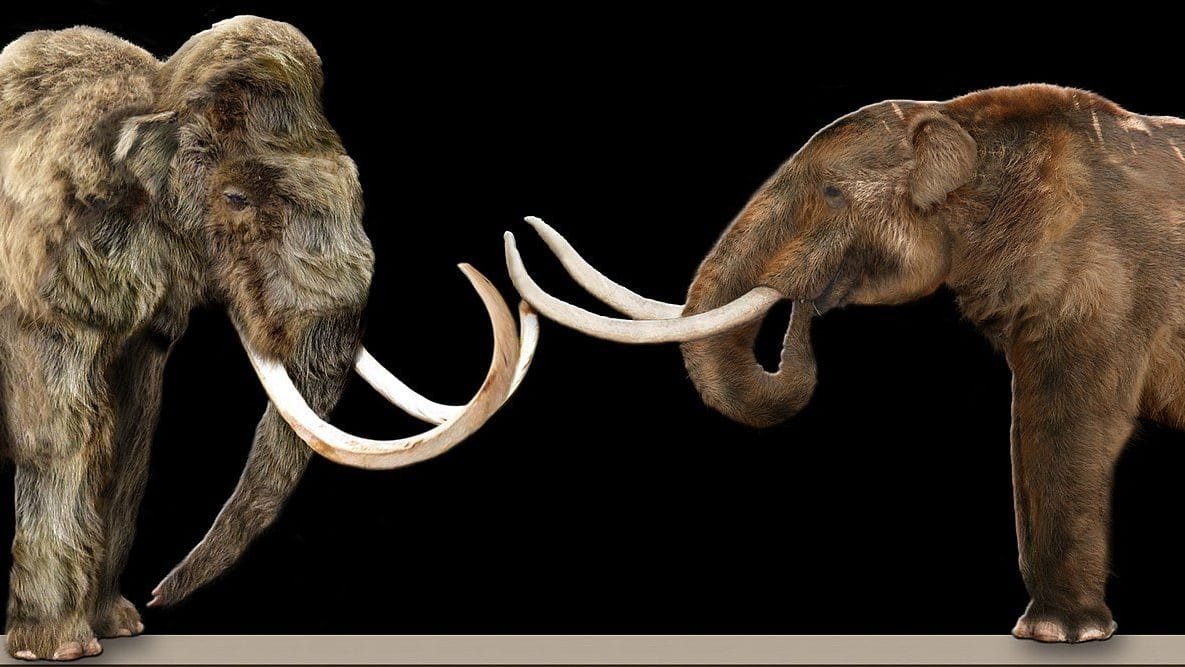Long before skyscrapers and highways, vast herds of giant creatures wandered across ancient landscapes.
Among them was the mastodon, a remarkable animal that resembled a modern elephant but was in fact a very different beast.
Though they disappeared thousands of years ago, mastodons left behind fossils that continue to fascinate scientists and storytellers alike.
But what exactly was a mastodon? How did it live, and why did it vanish from the Earth? Let’s journey back in time to meet this incredible prehistoric giant.
What Was a Mastodon?
Mastodons belonged to the genus Mammut, part of the order Proboscidea—the same order that includes elephants and mammoths. They first appeared about 30 million years ago and were among the most successful large mammals of their time.
Despite their resemblance to elephants, mastodons were only distant relatives. In fact, they diverged from the elephant family tree millions of years earlier than mammoths did. Think of them as cousins rather than siblings.
The most well-known species, Mammut americanum (the American mastodon), lived in North and Central America during the Pleistocene Epoch, which spanned from about 2.6 million to 10,000 years ago.
Size and Appearance
Mastodons were big—but not quite as towering as mammoths. On average, they stood about 8 to 10 feet tall at the shoulder and could weigh between 4 to 6 tons. That’s roughly the size of a modern African elephant.
Their most distinctive features included:
- Long, curved tusks: These could grow over 8 feet long and were used for defense, foraging, and perhaps even mating displays.
- Heavily muscled bodies: Built for strength more than speed, mastodons had stocky legs and a barrel-like body.
- Shaggy hair: Like their mammoth cousins, mastodons had thick coats to protect them from Ice Age climates.
- Distinctive teeth: Unlike mammoths, which had flat, ridged teeth suited for grazing, mastodons had cone-shaped molars. These were perfect for crushing leaves, twigs, and branches, indicating a diet more focused on browsing than grazing.
Habitat and Diet
Mastodons thrived in a variety of environments, from cold tundras to temperate woodlands. Fossil evidence suggests they preferred forests, swamps, and marshy regions, where food was abundant.
Their diet was primarily herbivorous, consisting of:
- Leaves
- Twigs
- Bark
- Shrubs
- Coniferous branches
Their teeth were well-suited for this type of diet, allowing them to grind tough, fibrous plant material. In this way, mastodons filled an ecological niche similar to modern moose or forest elephants.
Social Behavior
Though we don’t have direct evidence of their behavior, scientists believe mastodons lived in family herds, much like modern elephants. Fossil sites often contain remains of several individuals, suggesting they traveled and died together.
Herds likely consisted of females and their young, while males may have roamed alone or formed smaller bachelor groups. The presence of large tusks in both males and females suggests they were useful beyond just mating contests—possibly for protection and foraging as well.
Extinction: What Happened to the Mastodon?
Mastodons disappeared around 10,000 years ago, near the end of the last Ice Age. Their extinction is part of a larger pattern known as the Quaternary extinction event, during which many large mammals vanished from the Earth.
The exact cause is still debated, but researchers point to several key factors:
1. Climate Change
As glaciers retreated and climates warmed, the dense forests mastodons depended on began to shrink. Open grasslands replaced their preferred habitats, reducing food availability and disrupting their ecosystems.
2. Human Hunting
Around the same time, humans were spreading across the Americas. Evidence from some archaeological sites suggests that early humans hunted mastodons, possibly contributing to their decline.
3. Disease or Other Environmental Stressors
Some scientists speculate that a combination of environmental stress, disease, and competition with other species could have pushed mastodons past a tipping point.
In all likelihood, it wasn’t one single cause but a combination of these pressures that led to their extinction.
Legacy and Fossil Discoveries
Mastodon fossils have been found across North America—from Florida to Alaska—making them one of the most well-documented Ice Age animals on the continent. Their bones, teeth, and tusks are frequently uncovered during construction projects or natural erosion.
One of the most famous discoveries was the Cohoes Mastodon, found in New York in 1866. It’s still on display at the New York State Museum and serves as a reminder of the giants that once roamed the region.
Fossils have not only captivated museum-goers but have also helped paleontologists understand the evolution of elephants and the changing ecosystems of prehistoric America.
Final Thoughts: Remembering the Mastodon
The mastodon may be gone, but its story continues to echo through time. As scientists piece together its past, we gain not just knowledge of a single species, but a deeper understanding of how life evolves, adapts, and sometimes disappears.
More than just a prehistoric curiosity, the mastodon reminds us of the fragility and wonder of life on Earth. These towering creatures, once so dominant, now live only in our imaginations and the fossil record.
And maybe that’s the most powerful legacy of all—showing us how even the giants can fall, and why it’s so important to protect the ecosystems we still have today.

